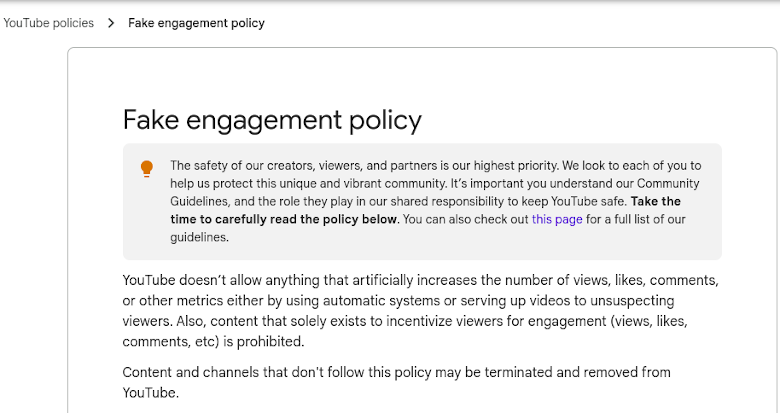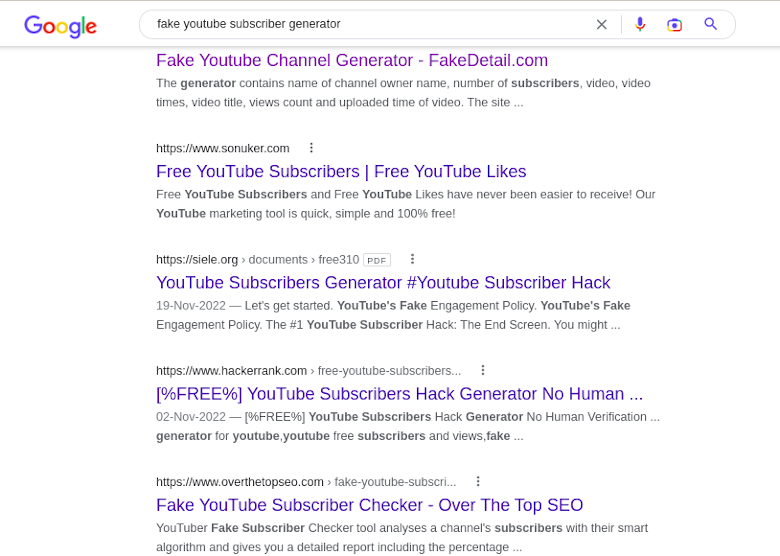
Why Most Video Makers Fail to Earn Money from Their YouTube Channels
While subscriber frauds are rampant on YouTube, the abundance of advertisements in videos also disturb the viewers.
By Rakesh Raman
If you enter the text string “why content creators are quitting youtube” on Google search, you will get a slew of results that describe the reasons for video content creators who are quitting YouTube.
The main factors for creators to shutter their YouTube channels are the lack of transparency in YouTube algorithm to prioritize content, ambiguous YouTube policies for hosting videos, and a total confusion about the monetization rules for video producers.
The shady YouTube content management mechanism does not allow the content creators to see the interaction with their videos in real-time while some of the videos on even active channels do not show any interactions – such as likes or subscribers – for days together.
As a result, most YouTube channels earn nothing or bigger channels fail to earn much on the video-sharing social network and, therefore, decide to close or even delete their channels.
For example, an article in The Times of India of December 19, 2024 describes the story of a woman YouTuber who deleted all her content from the site after wasting three years on it. She explains that after spending lakhs of rupees to create a couple of hundred videos on YouTube, she could not earn even a single penny from the site.
She showed her frustration with the opaque YouTube algorithm which according to her favours certain channels without considering their content quality. As the YouTuber failed to earn anything, she used Twitter to put her studio equipment on sale after deleting the content she had created.
There are hundreds of thousands of other content creators who are running away from YouTube, which many believe is not a useful platform for viewers, creators, and advertisers. While subscriber frauds are rampant on YouTube, the abundance of advertisements in videos also disturb the viewers.
DISTURBING ADVERTISEMENTS ON YOUTUBE
In an ongoing Raman Media Network (RMN) survey, 82% respondents say that they never prefer to see ads in YouTube videos. While there is no reliable data available to establish a correlation between a video ad and the promotion of a brand, most companies and individuals advertise on YouTube because the ad pricing depends on their budgets. That means, you can set your budget for a period of time and stop advertising when that budget is exhausted.
This weird advertising model has led to an unruly rat race where every Tom, Dick, and Harry would throw their intrusive YouTube ads to disturb the content viewers. The individual advertisers are naive who do not understand the advertising and marketing techniques. But it is shocking to see some corporate advertisers who push their disturbing ads on YouTube.
Almost all YouTube ads are highly repulsive while YouTube has no mechanism to check the quality of ads. Such ads that break the viewing experience of consumers defeat all advertising objectives and invite consumer anger and dislike for the brands or corporates.
[ Video: You can click here to watch a related video on YouTube. ]
In the RMN survey, 84% of consumers say that they feel disturbed with YouTube ads and 76% stop watching content videos that show ads. The brands must feel alarmed as 80% of the survey respondents reveal that they develop a dislike for brands that appear in YouTube ads.
It may be a compulsion for YouTube to show a surfeit of ads in the videos because of its stagnant ad revenues and pressure on profits which are generally not announced publicly. Under this corporate compulsion, the $32-billion Google company is trying to make money by hook or by crook. But there is no such compulsion for corporate brands which are trying to hurt their own interests by putting the torturing ads on YouTube.
There is also another dubious side of YouTube advertising, as some rogue video creators make money with their false popularity. The video makers make misleading thumbnails with their funny photos to deceive the viewers and artificially inflate their number of subscribers, views, likes, and comments.
One of the parameters to earn money on YouTube is the number of hours your videos are watched by viewers. In order to artificially increase their number of hours and attract advertisers, a large number of creators put their small videos in unending loops and upload them on YouTube. But YouTube has no mechanism to punish this fraud.
FAKE YOUTUBE SUBSCRIBERS
The fake YouTube subscribers are openly on sale or with a little effort you can get free subscribers. Along with subscribers, you can also buy interactions such as views, likes, comments for your YouTube videos and hoodwink the viewers to gain popularity deceptively.
In this fraudulent ad ecosystem, many brands are getting damaged. In order to make YouTube an effective ad platform, there is a need for a complete revamp of the advertising model while protecting the viewing rights of consumers.
As an ordinary user, you mostly get illusioned or impressed by the number of Facebook fans, Twitter followers, or YouTube subscribers of a person or a brand. But did you know that you can buy fake fans, followers, or subscribers like you buy onions and potatoes in the vegetable market?
And believe me, these bogus followers are cheaper than many commodities available in the market today. But as they are fake, do they help you achieve your professional or business objectives?
After publishing my recent research about Twitter (now called with a weird name X) and the digital deception happening on Twitter, I have now studied the modus operandi of YouTube channels and their owners.
At first sight, I was flabbergasted to see the viewers’ craze toward some so-called YouTube influencers and their video clips. Their channels claim to have millions of subscribers and each of their videos attracted hundreds of thousands or millions of views.
I delved deeper and found that even the run-of-the-mill videos in which these “celebrity” YouTube channel owners discussed something about the number of pieces in a bread box, or rat repellents, or a simple walk in the park, or tweet of a politician, were getting a swarm of viewers, besides zillions of likes and comments full of admiration.
I was disturbed, shocked, and terrified all at the same time because these ordinary videos challenged my decades of work that I have produced as an award-winning journalist and a leading content creator. I am hardly getting any viewers or subscribers on my YouTube channel that I began building recently.
My uncontrollable curiosity took me to Google search to decode the mystery of the YouTube ecosystem. I found that like other frauds happening on social media, YouTube is also a victim of huge deception.

There are a slew of web stories which reveal that the fake YouTube subscribers are openly on sale or you can even hope to get subscribers without paying any money. Along with subscribers, you can also buy views, likes, comments for your YouTube videos no matter how good or bad your videos are.
Although YouTube has something called “Fake engagement policy” which aims to stop fraudulent practices on the site, the policy does not work effectively. The Fake engagement policy states that:
“YouTube doesn’t allow anything that artificially increases the number of views, likes, comments, or other metrics either by using automatic systems or serving up videos to unsuspecting viewers. Also, content that solely exists to incentivize viewers for engagement (views, likes, comments, etc) is prohibited. Content and channels that don’t follow this policy may be terminated and removed from YouTube.”

However, despite YouTube’s warning, the frauds are rampant on the site. The video makers entice the viewers and advertisers with colourful thumbnails and artificially inflate their number of subscribers, views, likes, and comments.
But the videos that show millions of views or thousands of likes and comments under them are, in fact, tasteless pieces of crudely made visuals that lack engaging content.
The fake engagement on YouTube is not only through purchased profiles, but there are also automated subscriber generators which keep adding fictitious subscribers to the channel which may or may not be real.

Shockingly, some of these bogus channels are also earning money through advertisements that appear in their YouTube videos. Some video creators who have fake subscribers also position themselves as social media influencers to cheat and fleece companies which hire them to promote their brands.
And it appears that YouTube has no mechanism to detect and deal with this type of deception that is happening under its very nose. While some rogue video creators may be making money with their false popularity, the companies that advertise on YouTube must be cautious and should not fall prey to the trickery happening on the video-sharing site.
Thus, it can be concluded that you can earn good money from your YouTube channel if you know the tricks to cheat others. And if you are a genuine content creator who does not believe in fraudulence, you will earn zilch and soon you may have to shut your YouTube channel as many others are doing.
By Rakesh Raman, who is a national award-winning journalist and founder of the humanitarian organization RMN Foundation. He has been running the global technology news site RMN Digital for the past 12 years. Earlier, he was writing an exclusive edit-page tech business column (named Technophile) regularly for The Financial Express, which is a daily business newspaper of The Indian Express Group.
He had also been associated with the United Nations (UN) through the United Nations Industrial Development Organization (UNIDO) as a digital media expert to help businesses use technology for brand marketing and business development. You can click here to know more about him and his work.